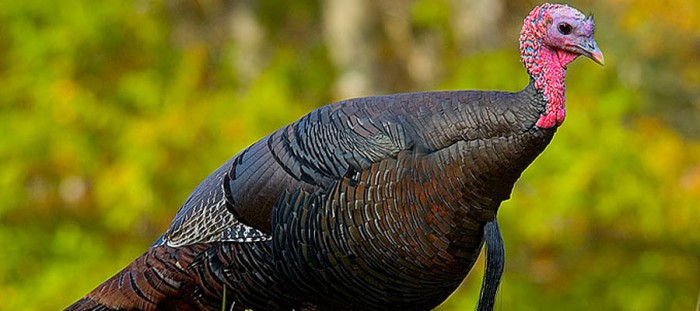Yep, wild turkeys.
There are only two species of wild turkeys in the world, and we’ve got them both right here in North America. Probably should be protecting them, eh?
Luckily for us, both turkey species regularly use wetlands at some point in their life cycle, so preserving their habitat doesn’t have to happen at the expense of other species. Indeed, wetland and grassland habitat provides ideal conditions both for brood rearing and for finding food. While many migrating and wintering waterfowl use moist-soil habitats for foraging in the fall, turkeys regularly feed in those same habitats in the spring once the flood waters have receded and a variety of vegetation starts blooming.
In order to protect the many species that use these moist-soil habitats, Ducks Unlimited has partnered with a range of public and private agencies to protect lands stretching from Mexico to Canada. Taking advantage of such programs as the Wildlife Habitat Incentive Program (WHIP) and U.S. Fish and Wildlife Habitat Partnership grants, Ducks Unlimited has been quite successful at preserving large, contiguous areas of habitat that will protect turkeys (and many other species) for generations to come.
To read more about their efforts, you can find more information by visiting the Ducks Unlimited website. If you have any photos of you bagging a wild turkey, we invite you to share the photo with us on our Facebook page!

